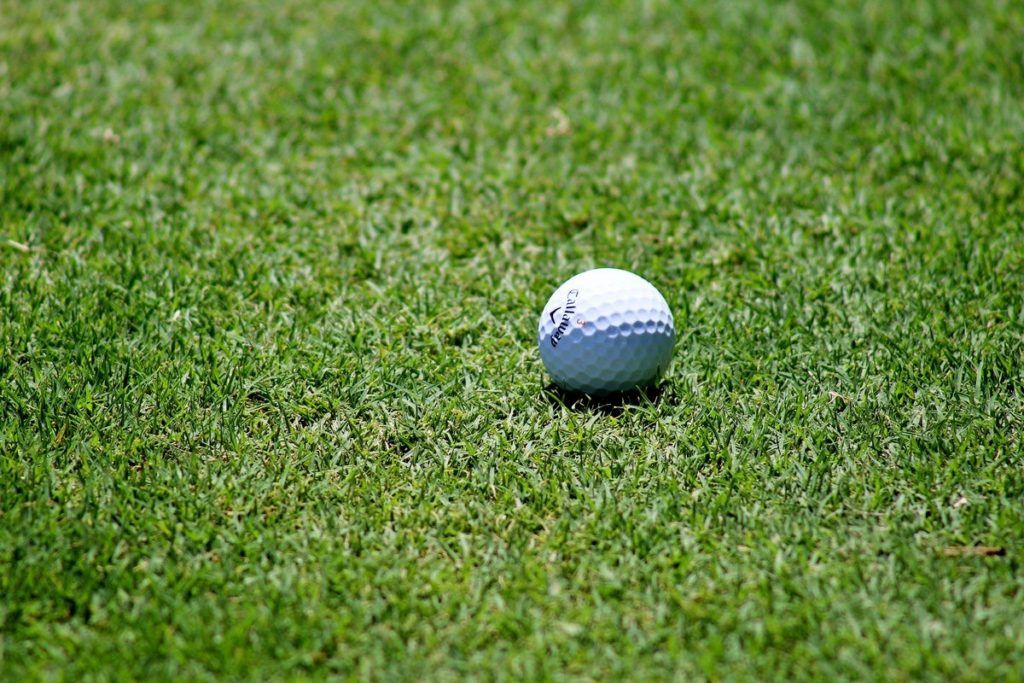Last issue, with the help of my long-time friend and student Morgan Mason, I introduced you to the underlying principles that shape our vision of the modern athletic golf swing based on extensive research and study in the field of biomechanics – the natural movement of the human body. Now we’re going to take things a stage further, with a look at some of the procedures we use in the screening process that enables us to identify a player’s physical capabilities – along with several of my favourite exercises that help a player to improve his body dynamic
By Jean-Jacques Rivet Head of Under armour innovation centre for Europe
Article 1 in this mini series – Le Swing Dynamic
Article 2 in this mini series – Work That Body
Article 3 in this mini series – Ground Control
Range of motion determines ability to hinge, rotate & coil…
Golf instruction typically assumes far too much when it comes to physical capability. ‘Make a full shoulder turn’, ‘resist with the right side’, ‘hinge your wrists to set the club up’, ‘unwind to a full finish…’, and so the language goes on. All of it well meaning and on-message in terms of good technique but often meaningless to a golfer who doesn’t enjoy a basic range of motion and who lacks balance and coordination.
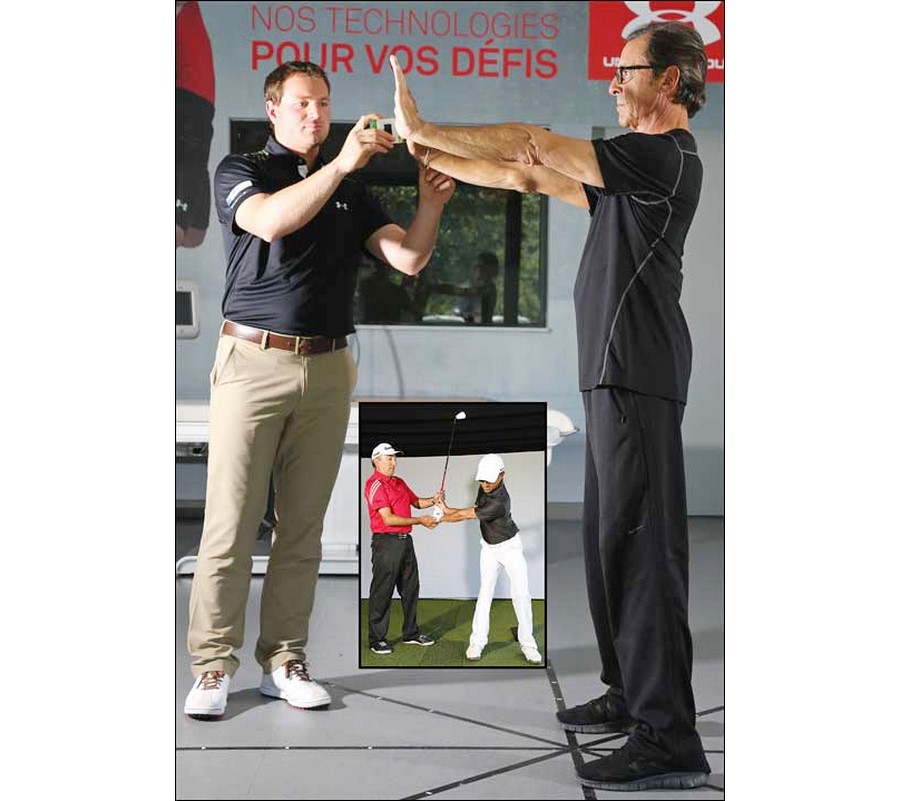
If a player exhibits less than 75 degrees in wrist dorsi flexion, Alain Alberti, head of the DLGA Academy, Terre Blanche, will decide on the appropriate emphasis in swing technique
The study of biomechanics in golf is designed to help a player better control the kinetic energy of the club through his or her body – the efficiency of a good swing being defined in its simplicity as the rotation of the core provides the hub around which the hands, arms and the club swing.
As I mentioned last time, my association with David Leadbetter and his team has inspired my understanding of the golf swing, and there is a certain animation within the sequence that we can identify with which, once understood, provides a useful road-map on the journey to better golf. Of course, theory in itself is nothing but a set of optimistic directions!
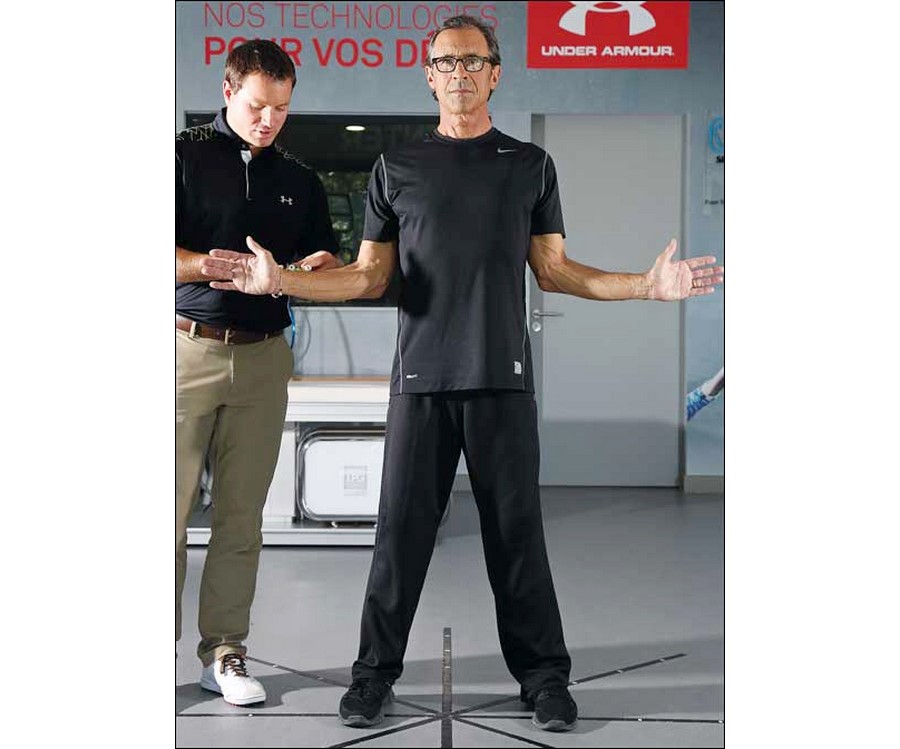
Exercises such as that illustrated below can help to improve this range of motion and balance the two sides of the body
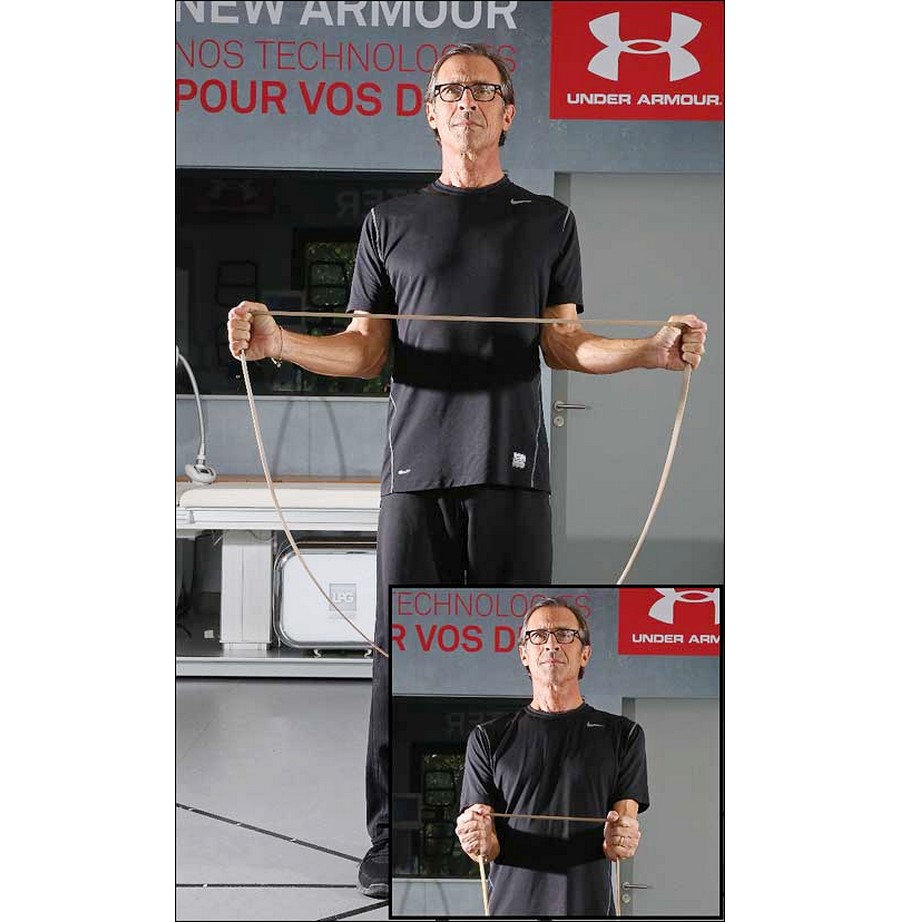
We need physical ability in order to turn those ideas into action, and the only way to truly establish your personal range of motion is to undergo a screening which will identify areas of strength along with areas in which improvement can be made via specific exercises designed to encourage better balance, flexibility and coordination – the key qualities that improve a player’s ability to swing a golf club.
On the European Tour, through our ETPI process, we use this type of screening not only to identify limitations but to suggest solutions. Modern science enables us to measure accurately a player’s physical capabilities – the alignment of the skeleton, the flexibility of the joints (from the ankle all the way to the neck), the freedom to hinge the wrists, to turn the shoulders, to rotate the torso, to dissociate the hips, and so on. Armed with the data, we can then devise a programme of physical improvement.
Identifying (and improving!) balance & core rotational ability
I have always been fascinated in how the components in the skeleton relate, how the muscles work together in sequence and how this can be achieved without tension. Flexibility is a supreme asset – as too is balance and coordination. When it comes to the so-called ‘dissociation’ of hips and upper body – the Holy Grail for many swing coaches – there is no better way to identify those qualities than working with a Swiss ball, and challenging your balance and ability to rotate in either direction as you see Morgan doing here.

The so-called ‘dissociation’ between hips and upper body is the key to maximising your coil over the resistance of the lower body, the key source of power in a golf swing.
It also helps Alberti and his team to adapt their coaching, dependant upon a player’s flexibility.
We always recommend that an individual who finds difficulty in completing this assessment seeks the advice of his or her doctor
In a sitting position, both feet flat on the ground, start with your hands flat on top of each thigh (pic 1) before then placing the left hand on the right thigh and the right hand on the ball behind you (pic 2). From here, and keeping both feet grounded, rotate your shoulders as far as you are comfortably able to the right and hold that position momentarily (pic 3 & main). Return to the starting position, switch hands (i.e. place your right hand on the left thigh), and repeat on the other side, rotating your shoulders this time as far as you can to look to your left, again keeping both feet flat on the ground.
Immediately you recognise the core body action that characterises a good golf swing. And your ability to rotate the torso against the resistance of the lower body will improve with this type of training, either at home or in the gym.
‘The ankle bone’s connected to…’
Everything that you do at the set-up is designed to help you access your centre of gravity; to help you maintain your body in a stable position, allowing the muscle chain to work in synchronisation and without excessive tension during the swing. The dynamic action of the lower body – the feet, legs and hips – harmonises with the rotation of the torso and the swinging of the arms and club. And the better the range of motion you enjoy in the lower body, the better will be the platform upon which you repeat a sound swing.
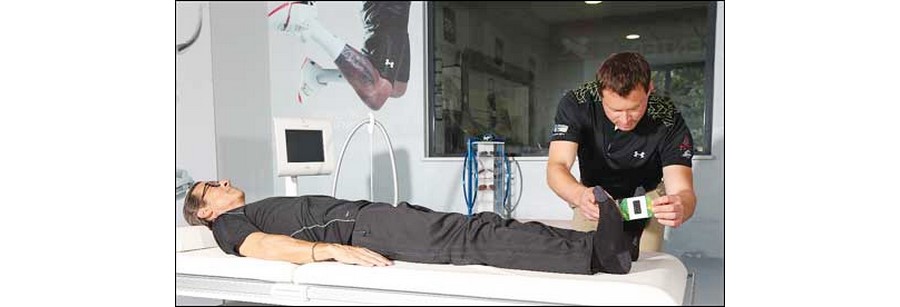
The better your strength and mobility here, the more effectively you will be able to remain ‘grounded’ during the swing, while the rotation of the bigger muscles in the trunk generates speed and power
Accessing your centre of gravity through good footwork is an area we will look at in detail next issue, but suffice to say that the relationship you enjoy with the ground is vital in terms of generating energy. There is a compression with the ground as you wind and unwind, and if you think of the lower body as being the ‘suspension unit’ you begin to appreciate the importance of training the muscles in the ankles, knees, thighs & hips to maintain flexibility. You have to take care of basic body conditions in order to avoid making sloppy mistakes with posture. The muscle chain starts through the feet and all are connected.
Working with your centre of gravity
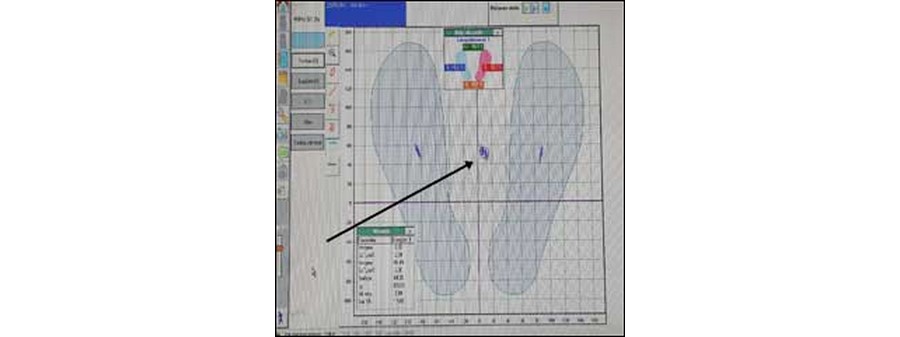
According to the rules of posture in science, we know where the CoG should be, and via the Force Platform, we are able to measure exactly a player’s weight distribution and pinpoint the CoG. Here I have asked Morgan to stand up perfectly straight and to get his weight ‘centred’, and while he is balanced between the feet, the computer screen reveals that his CoG is significantly forward of where it should be. This is very common. A tendency to tip forward in a standing posture can be attributed to the modern lifestyle – i.e. sitting at a computer, in the car, arching the back – factors that lead to our neglecting the front muscles, which get weak. So the body tends to tip forward, and we fail to engage muscles like the tibialis anterior, and this upsets the balance and grounding in the feet. Your doctor or podiatrist could make such an analysis, and would most likely suggest creating insoles for your shoes that help to engage the correct muscles and improve your posture over the ball.
Use your noodle! It’s all about balance…
As I mentioned last issue, the whole area of footwork, weight distribution and balance, as it relates to good posture, is something the majority of golfers misunderstand – to the detriment of their golf swing. Probably the most common fault we see is the tendency to stand with the weight too much toward the front part of the feet.
As a result, a player’s centre of gravity management is compromised – and with it the ability to wind and unwind with the repeating body action.
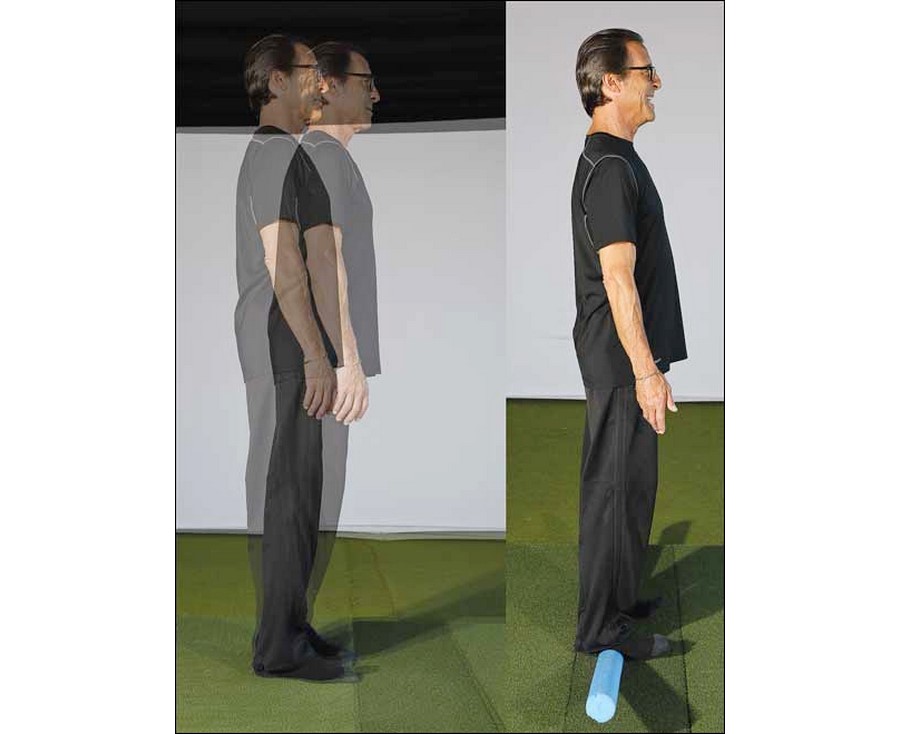
(R) Identifying with your centre of gravity becomes a little more testing when standing on a foam noodle! The trick is to get the noodle positioned in the middle of the feet, and then turn up your toes to locate your centre of gravity.
This is a terrific drill to rehearse while hitting balls on the range – and I’ve even known tour players to do this during a tournament round
As a simple test, stand up as straight as you can, and try to sense that your weight and CoG is perfectly balanced through the middle of your feet. Chances are, like Morgan, you are tipped slightly forward (as he is in the ghosted image). Now curl up your toes as much as you can, and feel the effect doing that has on your posture – immediately you are more vertical (the difference in Morgan’s posture is clear to see!). This is down to the engagement of the foot extensors, whose physiology directly relate to posture. And this is a great feeling to go after as you prepare to settle into posture over the ball. Curl your toes up inside your shoes as you finalise your set-up position, and feel the way that places your weight – and your centre of gravity – more in the middle of the feet.

Using a noodle as you see here makes for a good test of dynamic balance in posture.
The key is that you stand in such a way that you get the centre of each foot pressing down on the noodle so that you are able to engage the muscles in your ankles, thighs and hips and so resist the tension on the resistance band Jean Paul is holding
Harmonise movement of arms and core over athletic, stable base…
We have only touched on the numerous tests that comprise a comprehensive screening (there are over 90 processes involved with the ETPI), and while such a process is clearly personal to the individual I can tell you with 100% certainty that the drills you see illustrated here are applicable to every single golfer out there.
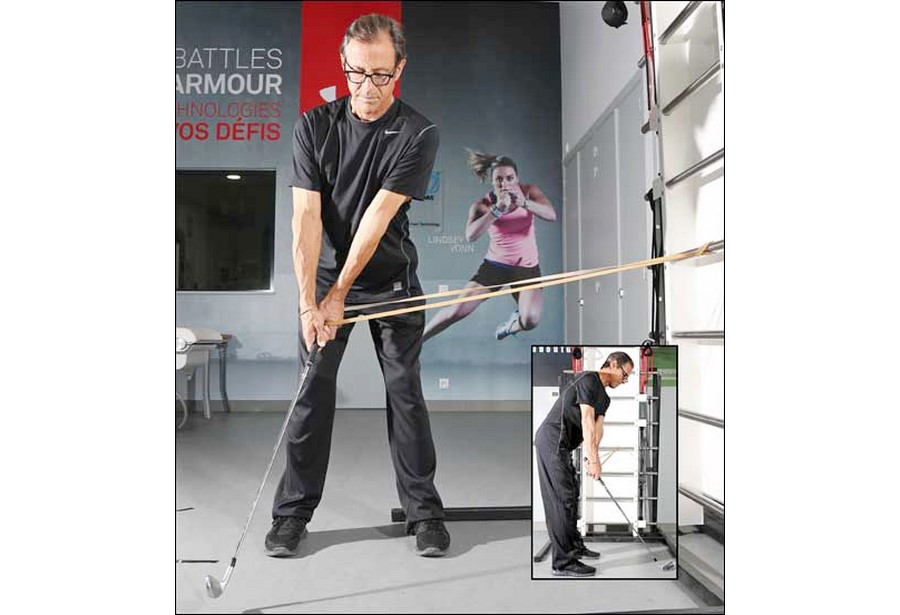
If you were to list the key qualities of a sound swing you would find good core movement and a stable base up there near the top, and these exercises can help you to improve in both of these areas with just a few minutes’ practice each week. All you need is a medicine ball and a foam noodle.
The first of these exercises involves creating good posture standing on the noodle (optimising the CoG as described previously), and then working your arms and core together over that stable base as you swing the medicine ball to and fro. Work the arms and body as a unit to hip-high, first away from and then toward your target; in so doing you will develop a great sense of momentum – feel it in your body core.
The second exercise takes things a stage further: the challenge now, from a free-standing position with the ball in the palms of your hands, is to take a step forward to create a walking squat and then rotate your arms and torso against the resistance of that leading leg, alternating between the right and left side. With each repetition you will be replicating (and strengtheing) the athletic motion we look for in a good swing – i.e. rotating against a braced right knee and thigh representing the backswing, against a braced left side representing the through-swing.
Not only that, but the more coordinated and fluid you can make the series of movements, the better and more instinctive your golf swing will be.
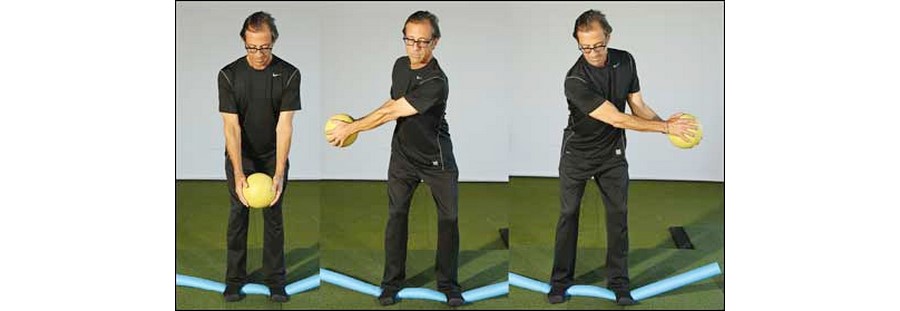
Working arms and torso together, your goal is to improve your core stability while at the same time achieve dissociation between the hips and shoulders.
This exercise gives you the basis of a movement in which the core is stable, synchronising the muscle chains that enable you to release the club with the throwing of the arms and hands through impact

Then, in a continuous motion, extend your arms to feel the full weight of the medicine ball as you hold it steady out in front of your body, eyes forward and in perfect balance.
Keeping your arms as straight as comfortably possible, rotate your torso to sweep the ball first to the right (the backswing) and then repeat on the other side (as in the lower images) to swing into the follow-through
Core rotation –How to optimize the energy in the recoil
The concept behind the exercises we use here at the Albatros Academy, at the Terre Blanche Hotel Spa and Golf Resort, and also in association with the European Tour through the ETPI set up is that regular rehearsal develops muscle memory – feel really does become real!
And nowhere is resistance band training more valuable to you than right here in the allimportant change of direction from the top of the swing. For a split-second your body is working in two directions at once: just as your shoulders, arms and the club are completing their journey to the top, so the hips and lower body reverse their momentum to initiate the downswing sequence. As I have stated previously, a good player draws energy up from the ground to optimise this dynamic, and with the help of a resistance band this is a move you can work on both at home or in the gym.
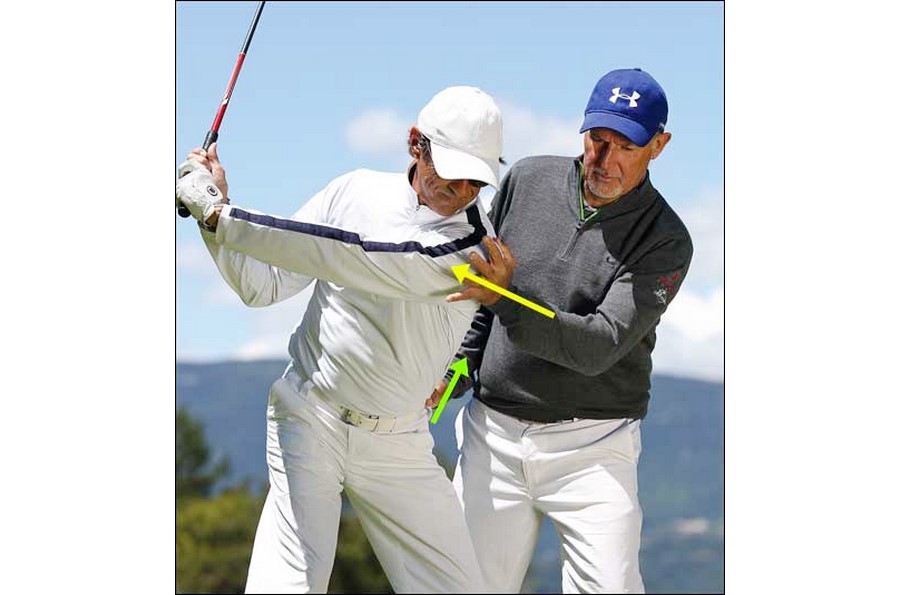
All you need to do is loop the band to a fixed point (ideally a foot or so above your head) and then use its resistance to help you focus on the correct synchronisation of the body action that enables you to exert energy and pull down on it as you throw the gears into reverse. Keep your feet grounded as you first ‘load up’ into a good backswing position, and then prepare for the change in direction: the shoulders hold their position momentarily as the left hip and left knee re-rotate to reverse the momentum.
The point you must understand here is that there is no rush to get into the hitting position. One of the characteristics we can observe in top professionals is that they have a constant acceleration towards this position; they ‘settle’ into the transition, a la Sam Snead and Ben Hogan, ‘hanging’ the right side back for a splitsecond before firing through the ball.
And it is as a direct result of this latent athleticism in the change of direction that the arms and the club shallow onto a delivery plane and swing down from the inside (again, travelling in the same direction as the centre of gravity).
So the key, as you pull on that resistance band, is to feel your transition is inspired by the hips – in the process of dissociating the hips you will enjoy the squat motion that enables you to then pull the arms down into the hitting position. Rehearse this three times in succession before then pulling all the way to impact. If you try to do this without first engaging the hips you will appreciate how much more difficult it is. Your kinetic chain is simply out of kilter; but work from the ground up, and the natural dynamic optimises your chain of energy, with that one key move you will strike more solid and more powerful golf shots.
Balance rotation on both sides –And beef up your coiling motion…
The most popular exercises we use in our coaching are those which combine a number of elements we are looking to improve in the swing. And this final Swiss ball routine is one of those – a simple work-out drill that will improve your all-round coordination while at the same time challenging your sense of balance and developing muscle groups that are key in producing a sound golf swing. Using resistance bands attached to wall apparatus, sit on the ball as you see Morgan demonstrating here and prepare to work on a series of reps pulling on the bands one hand after the other while all the time remaining on that forward-facing, feet grounded position. You will quickly feel the burn! Reps of 10 on each side will improve shoulder strength, balance and coordination – vital ingredients in the quest for better golf.
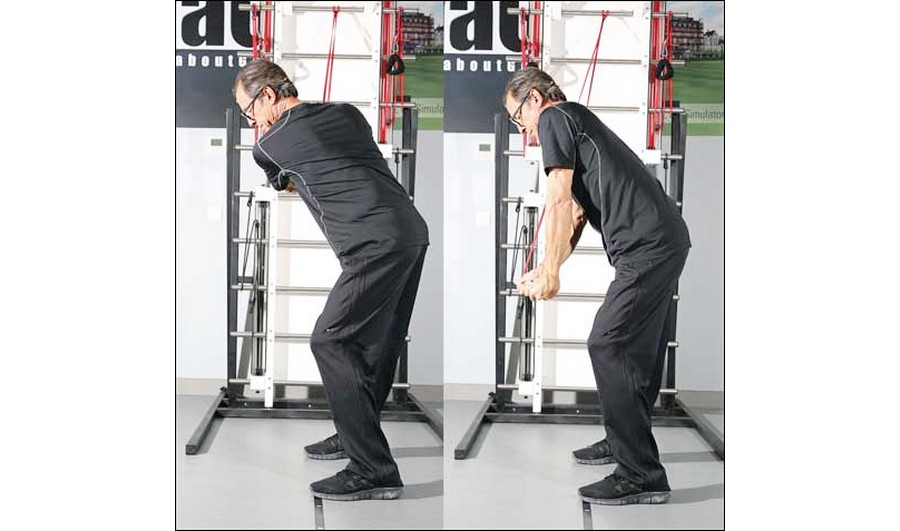
Transition works from the ground up, the subtle re-rotation of the left knee and left hip settling you into a ‘squat’ position and shallowing the path of the arms and hands

Understanding the biomechanics of the human body is crucial for anyone looking to perfect their athletic performance, whether it’s on the golf course or in another sport. This focus on natural movement and personalized improvement plans highlights the importance of research, analysis, and effective communication—skills that also translate well into other fields. For those with a passion for storytelling and analysis, exploring opportunities such as entry-level journalist London roles could be the perfect way to combine their curiosity with a meaningful career path.
